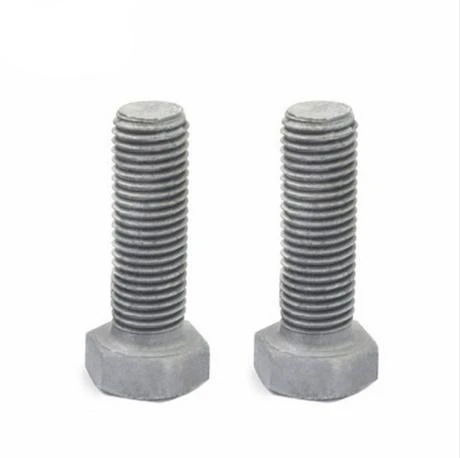

types of clips and fasteners
Des . 18, 2024 03:28 Back to list
types of clips and fasteners
Types of Clips and Fasteners An Overview
In the vast world of construction, manufacturing, and everyday household tasks, clips and fasteners play a crucial role in ensuring that materials are securely joined together. From holding two pieces of paper to binding structural components in buildings, clips and fasteners come in various types designed for specific applications. Understanding these types and their characteristics can help you choose the right fastener for your project.
1. Clips
Clips are typically used to hold two or more objects together without penetrating the material. They are often reusable and easy to apply or remove. Here are some common types
- Paper Clips These are perhaps the most well-known type of clip. Paper clips are designed to hold sheets of paper together without causing damage. They come in various sizes and shapes, such as standard, jumbo, and triangular clips. Their simplicity and effectiveness have made them a staple in offices worldwide.
- Binder Clips Binder clips provide a more secure hold than traditional paper clips. They consist of two metal arms that hold the clips in place and can accommodate larger stacks of paper. These clips are perfect for organizing reports, documents, or any group of papers needing to be kept together.
- Hair Clips Used for personal grooming, hair clips come in various sizes and designs, from simple barrettes to complex hairpins. They are designed to secure hair in place and can be decorative as well as functional.
- Clothes Clips Commonly known as clothespins, these clips help hang laundry to dry. They have a spring mechanism that provides strong grip and hold, ensuring that clothes stay attached to the line even in windy conditions.
2. Fasteners
Fasteners are devices used to join two or more items together securely. Unlike clips, they often require tools for installation. Here are some prominent types of fasteners
- Nails Nails are one of the most traditional fasteners used in woodworking. They come in various sizes and types, including common nails, finish nails, and brad nails, each suitable for different applications. Nails are driven into the material using a hammer or nail gun, providing a strong bond.
types of clips and fasteners

- Screws Screws have a spiral thread that extends around the shaft, allowing them to thread into materials for a tighter hold. They are versatile and can be made from various materials, including steel, brass, and plastic. Screws are often used in assembly applications due to their ability to provide a more secure connection compared to nails.
- Bolts Bolts are similar to screws but are typically used for heavy-duty applications. They often require a nut to secure them in place. Bolts are used in construction and machinery, providing robust connections that can withstand high levels of stress and load.
- Anchors Used primarily in masonry, anchors help attach objects to concrete, brick, or drywall. They come in various types, including expansion anchors and toggle bolts, each designed for specific weight capacities and applications.
- Rivets Rivets are permanent fasteners used to join two or more materials by deforming the tail end of the rivet after insertion. They are commonly used in the aerospace and automotive industries, providing strong connections that can withstand high pressures and temperatures.
3. Specialty Fasteners
Beyond standard clips and fasteners, there are specialty options designed for unique applications
- Zip Ties Also known as cable ties, zip ties are used for bundling wires and cables together. They are made from plastic and can be tightened to securely hold items in place, making them a favorite in electrical work.
- Magnetic Fasteners These fasteners use magnets to hold materials together. They are popular in applications where quick access is needed, such as in toolboxes or cabinets.
- Snap Fasteners Commonly used in clothing, snap fasteners are two-part designs that snap together. They are often found on jackets and children's clothing due to their ease of use.
Conclusion
Clips and fasteners are integral components in countless applications across various industries. Whether for everyday tasks such as organizing papers or for critical engineering purposes, understanding the types of clips and fasteners available helps one make informed choices that enhance performance and reliability. By choosing the right type for your needs, you can ensure that your materials are secured effectively and efficiently. The diverse range of options means that no matter what your project entails, there is a clip or fastener designed just for you!
Latest news
-
Hot Dip Galvanized Bolts-About LongZe|High Strength, Corrosion Resistance
NewsJul.30,2025
-
High-Strength Hot Dip Galvanized Bolts - Hebei Longze | Corrosion Resistance, Customization
NewsJul.30,2025
-
Hot Dip Galvanized Bolts-Hebei Longze|Corrosion Resistance&High Strength
NewsJul.30,2025
-
High-Strength Hot-Dip Galvanized Bolts-Hebei Longze|Corrosion Resistance&High Strength
NewsJul.30,2025
-
Hot Dip Galvanized Bolts-Hebei Longze|Corrosion Resistance&High Strength
NewsJul.30,2025
-
Hot Dip Galvanized Bolts - Hebei Longze | Corrosion Resistance, High Strength
NewsJul.30,2025

